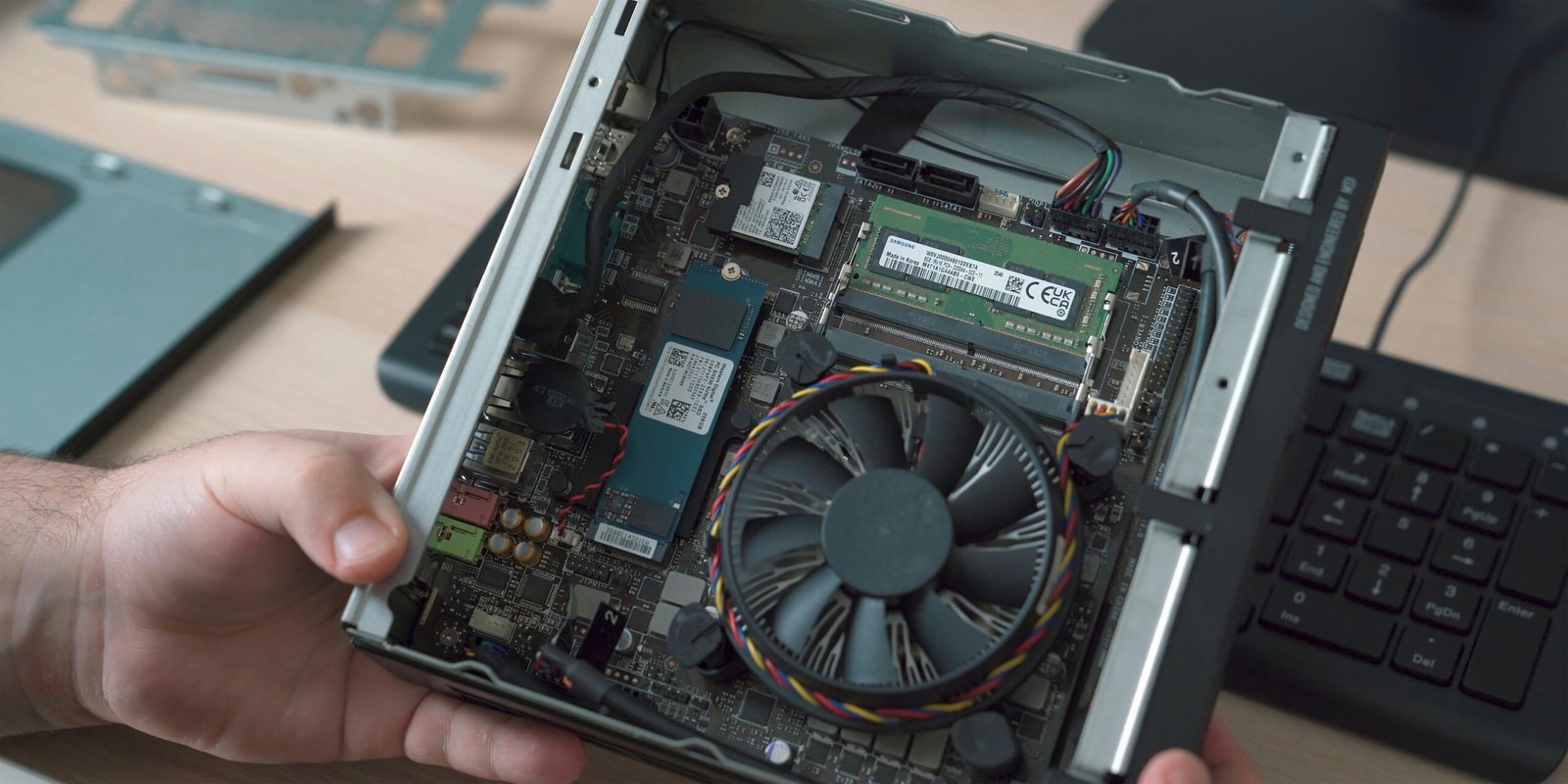OLED vs IPS LCD: Which Display Technology is Better?
“`html
Understanding OLED and IPS LCD Technologies
To accurately assess the merits of OLED and IPS LCD technologies, it is vital to understand their foundational principles and historical developments. OLED, or Organic Light-Emitting Diode, leverages organic compounds that emit light when an electric current is applied. These organic layers are sandwiched between two electrodes, one of which is transparent, allowing the emitted light to pass through and form images. The self-emitting nature of OLEDs eliminates the need for a backlight, leading to slimmer displays with the potential for deep black levels and high contrast ratios.
Conversely, IPS LCD, or In-Plane Switching Liquid Crystal Display, operates using liquid crystals aligned in parallel to produce vivid colors and wide viewing angles. Unlike OLEDs, which generate their own light, IPS LCDs rely on a backlight to illuminate the liquid crystals. This backlight is typically composed of white LEDs placed behind the LCD panel. The alignment of liquid crystals in the IPS configuration allows for more accurate color reproduction and consistent viewing from various angles, making them ideal for professional graphic work and group viewing scenarios.
The history of these technologies further underscores their differences. OLEDs emerged as a commercial technology in the late 2000s, developed from earlier research into electroluminescent materials. Initial OLED displays were plagued by short lifespans and high production costs, but advancements in manufacturing and materials have significantly mitigated these issues. By contrast, IPS LCD technology was introduced in the 1990s as an improvement over traditional twisted nematic (TN) LCDs, which suffered from poor color accuracy and limited viewing angles. IPS technology quickly found favor in computer monitors, smartphones, and tablets due to its superior performance in these areas.
The key components of each technology fundamentally impact their display performance. The emissive nature of organic layers in OLEDs allows for individual pixel control, resulting in unparalleled levels of contrast and energy efficiency when displaying darker scenes. On the other hand, the liquid crystals in IPS LCDs provide robust color accuracy and stable image quality, regardless of viewing angle. Understanding these mechanics sets the stage for a deeper exploration of the comparative strengths and weaknesses of OLED and IPS LCD technologies.
“`
Display Quality: Brightness, Color Accuracy, and Contrast Ratio
When comparing OLED and IPS LCD technologies, several critical factors come to the forefront: brightness, color accuracy, and contrast ratio. One of the defining characteristics of OLED (Organic Light-Emitting Diode) displays is their ability to turn off individual pixels completely, which allows for the depiction of true blacks and an outstandingly high contrast ratio. Unlike IPS LCD (In-Plane Switching Liquid Crystal Display) screens that rely on a backlight, OLED’s pixel-level control facilitates richer color vibrancy and depth, providing a viewing experience that many find visually stunning.
An OLED display can achieve a near-infinite contrast ratio because its pixels emit their own light. Therefore, when the pixels are off, there is total absence of light, resulting in true black images. This precise control over pixel-level illumination not only enhances contrast but also contributes to color accuracy and vibrancy, creating visuals with extraordinary realism and depth. On the other hand, IPS LCDs employ a constant backlight, causing blacks to appear more like dark grays, which lowers the overall contrast ratio.
Brightness, however, is a parameter where IPS LCDs often hold an advantage. IPS panels can deliver more consistent brightness levels across the entire screen. This consistency makes them favorable for environments with high ambient light, as they can be more visible under direct sunlight. Moreover, IPS LCDs maintain color accuracy across wider viewing angles. For applications like graphic design or video editing, where accurate color reproduction is crucial across broad viewing positions, IPS technology offers noticeable benefits.
Despite the tremendous advantages of OLED displays in color vibrancy and contrast, typical consumer usage may reveal instances where its maximum brightness falls short in very bright settings. Conversely, the consistent brightness of IPS LCDs ensures dependable performance in varied lighting conditions.
Real-world data further substantiates these differences. For example, an OLED display might boast a contrast ratio of 1,000,000:1, while a high-quality IPS LCD might be limited to around 1,000:1. While OLED screens tend to offer superior depth in dark scenes and more lifelike colors, IPS LCDs offer steadier brightness and color integrity in a wider range of ambient lighting scenarios.
“`html
Performance and Longevity: Power Consumption, Burn-in, and Lifespan
When considering the performance and longevity of display technologies, both OLED and IPS LCD have distinct advantages and limitations. One of the critical aspects regarding performance is power consumption. OLED displays are known for their energy efficiency, particularly when displaying dark images. This is because OLED pixels emit their own light and can be turned off individually, leading to significant power savings in darker scenes. However, this efficiency can diminish when displaying bright images, where OLEDs may consume more power than their IPS LCD counterparts.
In contrast, IPS LCDs rely on a backlight that remains consistently on, regardless of the image being displayed. This uniform backlighting leads to a steady power consumption level, which may be more advantageous in scenarios involving predominantly bright or mixed content. Thus, the context in which the display will be used becomes a significant factor in determining power efficiency.
Another critical factor to consider is the issue of burn-in, predominantly associated with OLED technology. Burn-in occurs when static images are displayed for prolonged periods, leaving a permanent imprint on the screen. This issue can be a significant drawback for users who often display static elements, such as status bars or navigation interfaces. Although manufacturers have made notable advancements in mitigating burn-in effects through software and hardware improvements, it remains a concern for potential OLED users.
On the other hand, IPS LCDs generally exhibit a longer lifespan and are less susceptible to issues like burn-in. The backlighting technology of IPS LCDs tends to degrade more evenly over time, ensuring consistent performance throughout the display’s life.
User experiences and expert opinions highlight these differences further. Many users appreciate the vibrant colors and deep blacks of OLED displays but remain cautious about the potential for burn-in. Conversely, IPS LCD users often praise the reliable and uniform image quality over long periods, making it a favored choice for applications where longevity and static image display are essential.
Technological advancements continue to address these challenges. For instance, techniques like pixel shifting and improved materials in OLED panels aim to reduce burn-in risks, while enhancements in backlighting systems for IPS LCDs focus on improving overall power efficiency. Ultimately, the choice between OLED and IPS LCD will depend on individual preferences and specific use cases, balancing the trade-offs between power consumption, potential burn-in, and lifespan.
“`
Application Suitability: Best Use Cases for OLED and IPS LCD
Choosing between OLED and IPS LCD display technologies depends significantly on the intended application and user priorities. Each technology comes with its own set of strengths that make it more suitable for certain devices and use cases. Understanding these suitability factors can help consumers make well-informed decisions that best align with their specific requirements.
OLED displays are renowned for their superior image quality and capacity to produce true blacks, owing to their ability to switch off individual pixels entirely. This characteristic makes OLED an excellent choice for high-end smartphones, where vibrant colors and high contrast ratios are paramount for an immersive visual experience. The same qualities make OLED the preferred technology for premium televisions, where rich blacks and a wide color gamut can drastically enhance movie and video viewing. Additionally, professional photo editing monitors benefit from OLED’s precise color reproduction, which is critical for tasks that demand high levels of color accuracy and consistency.
On the other hand, IPS LCD technology, while not matching OLED in terms of contrast and black level depth, offers significant advantages in other areas. One noteworthy advantage is longevity. IPS LCDs are less susceptible to burn-in, a phenomenon where static images cause permanent damage to the display. This makes IPS LCDs ideal for devices like computer monitors and budget-friendly smartphones that are often used to display static content for extended periods. Furthermore, IPS LCD screens tend to be more cost-effective in general, making them a popular choice for consumer electronics where budget constraints are a crucial consideration.
Guiding consumers towards the best display technology for their needs involves weighing these application-specific advantages. For users seeking top-tier image quality and are less concerned about potential burn-in, OLED may be the optimal choice. Conversely, for individuals prioritizing durability and affordability, particularly in devices used for viewing static images, IPS LCD offers a more compelling proposition. By understanding these nuances, consumers can select the display technology that best caters to their usage patterns and preferences, ensuring satisfaction with their chosen device.







